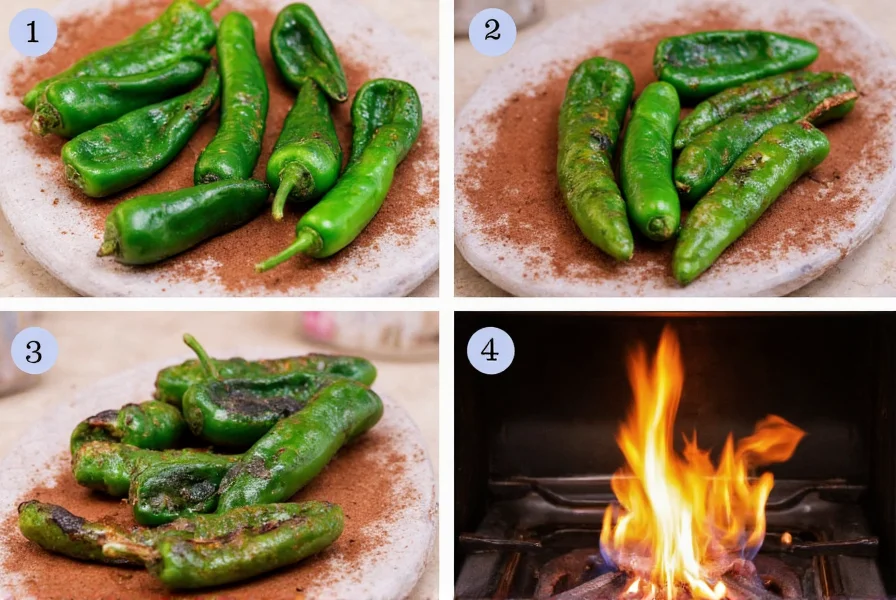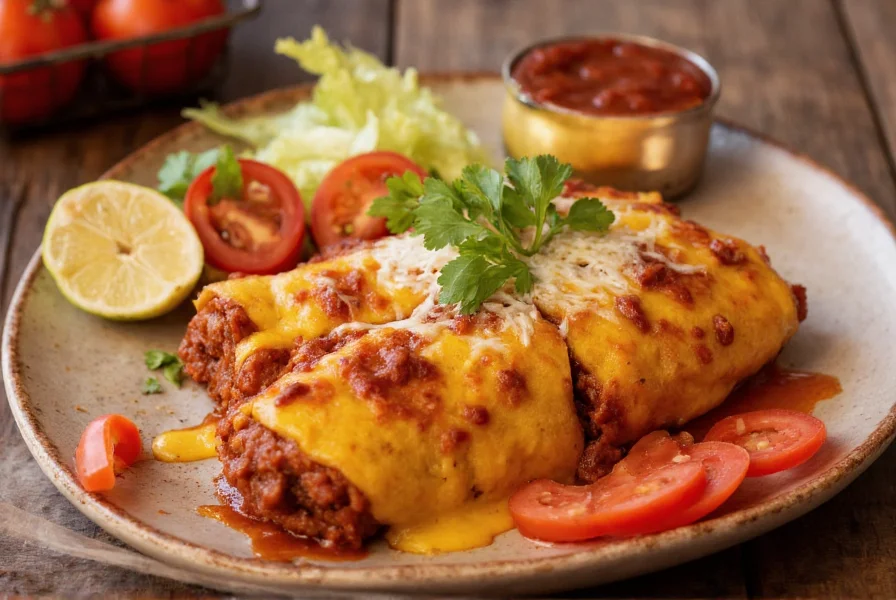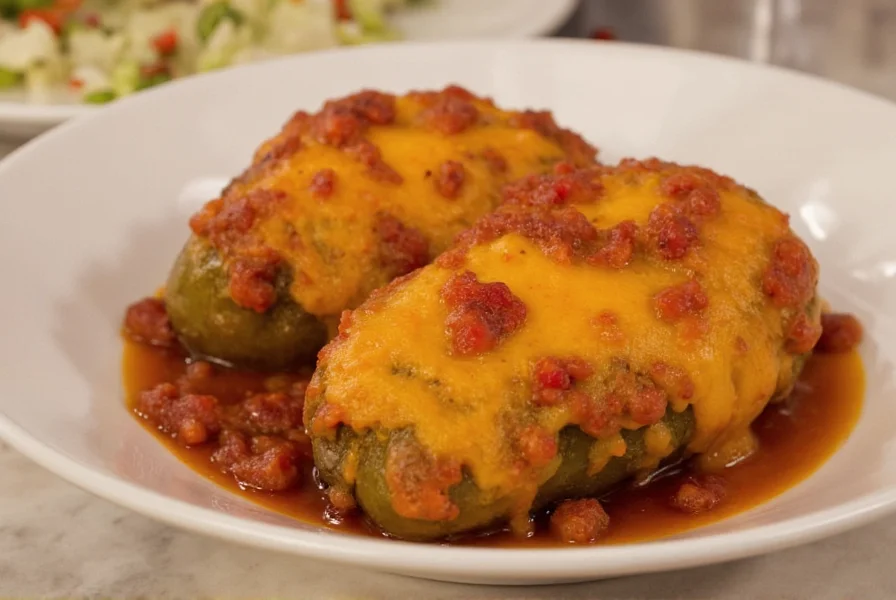Chili relleno, which translates to “stuffed chili,” is a beloved Mexican dish featuring roasted poblano peppers filled with cheese, coated in a delicate egg batter, and fried to perfection. This traditional recipe balances smoky peppers with creamy cheese and a light, crispy exterior. While variations exist across regions, the authentic preparation focuses on simplicity and quality ingredients rather than complicated techniques.
Essential Ingredients for Perfect Chili Relleno
The magic of chili relleno comes from just a few quality ingredients. Don't substitute carelessly—each component plays a crucial role in the final dish.
| Ingredient | Quantity | Notes |
|---|---|---|
| Fresh poblano peppers | 4-6 | Look for firm, dark green peppers without wrinkles |
| Queso fresco or Monterey Jack | 8 oz | Queso fresco offers traditional flavor; Monterey Jack melts better |
| Large eggs | 4 | Room temperature for best batter consistency |
| All-purpose flour | 1/2 cup | For dusting before batter application |
| Vegetable oil | 1 cup | For frying—use high smoke point oil |
| Tomato sauce | 2 cups | Homemade preferred, but quality canned works |
Equipment You'll Need
Having the right tools makes preparing chili relleno significantly easier:
- Gas stove or broiler for roasting peppers
- Plastic bag or bowl with plastic wrap for steaming peppers
- Sharp paring knife
- Mixing bowls (one large for egg whites)
- Whisk
- Shallow dishes for flour and egg batter
- Slotted spoon
- Paper towels for draining
Step-by-Step Preparation Guide

1. Roasting and Peeling the Poblanos
This critical step develops the peppers' flavor and makes them easier to handle. Place whole poblanos directly over a gas flame or under your broiler, turning frequently with tongs until evenly blackened (about 15-20 minutes). The skin should blister and char completely. Immediately transfer to a plastic bag or bowl covered with plastic wrap for 10 minutes—this steaming process loosens the skin.
Carefully peel away the blackened skin, starting from the stem end. Try to keep the peppers intact—if they tear, don't worry, you can secure them with toothpicks later. Make a small slit along one side of each pepper and gently remove seeds and membranes while keeping the pepper whole. Pat dry with paper towels.
2. Stuffing the Peppers
Cut your cheese into long, thin strips that will fit inside the peppers. Gently open the slit in each roasted poblano and insert 1-2 cheese strips, being careful not to overfill. The cheese should fill about 75% of the pepper's capacity, as it will expand when melted. If needed, secure the opening with toothpicks, but avoid piercing all the way through the pepper.
3. Creating the Perfect Batter
Separate your eggs completely—any yolk in the whites will prevent proper whipping. Whip the egg whites with a pinch of salt until they form stiff peaks (when you lift the beaters, the peak should stand straight up). In a separate bowl, beat the yolks lightly, then gently fold them into the whipped whites. Do not overmix—you want to maintain as much air as possible for a light batter.
4. Frying Technique for Crispy Results
Heat 1/2 inch of oil in a heavy skillet to 350°F (175°C). Lightly dust each stuffed pepper with flour, then carefully dip in the egg batter, coating completely. Use a spoon to help cover any bare spots. Gently lower into hot oil using a slotted spoon.
Fry 1-2 peppers at a time for 3-4 minutes per side until golden brown. The batter should puff up immediately upon contact with the oil. Drain on paper towels. Properly fried chili rellenos will have a light, airy exterior while keeping the pepper intact.
Common Mistakes to Avoid When Making Chili Relleno
Even experienced cooks make these errors when preparing traditional chili relleno. Avoid these pitfalls for perfect results every time:
- Using the wrong peppers - Poblanos are essential; jalapeños are too hot, bell peppers lack flavor
- Skipping the roasting step - Raw poblanos are tough and lack the signature smoky flavor
- Overfilling with cheese - Too much cheese causes bursting during frying
- Improper egg batter - Yolks mixed too thoroughly with whites create dense coating
- Oil temperature too low - Results in greasy, soggy chili rellenos instead of light and crispy
- Frying too many at once - Lowers oil temperature and causes uneven cooking
Serving Suggestions and Variations
Serve your chili relleno immediately while the cheese is perfectly melted and the batter is still crisp. Traditional accompaniments include:
- Warm corn tortillas
- Refried beans
- White rice
- Fresh pico de gallo
- Creamy avocado slices
For the sauce, a simple tomato salsa or ranchero sauce complements the dish beautifully. Pour a small amount on the plate before placing the chili relleno on top, then add additional sauce as desired.

Popular Variations
While the cheese-filled version is most common, regional variations include:
- Chile en nogada - Poblano stuffed with picadillo (meat and fruit mixture), topped with walnut sauce and pomegranate seeds
- Seafood rellenos - In coastal regions, shrimp or crab stuffing
- Vegetarian options - Black bean and corn filling for non-cheese versions
- Breakfast relleno - Stuffed with scrambled eggs and chorizo
Storage and Reheating Tips
Chili relleno is best enjoyed fresh, but leftovers can be stored properly:
- Refrigerate in an airtight container for up to 2 days
- Reheat in a 350°F (175°C) oven for 10-15 minutes—avoid microwaving which makes the batter soggy
- Do not freeze cooked chili rellenos—the texture deteriorates significantly
- Unstuffed roasted poblanos can be frozen for up to 6 months
Frequently Asked Questions
What's the best cheese for traditional chili relleno?
Queso fresco is the traditional choice for authentic chili relleno, offering a mild, slightly salty flavor that complements the roasted poblano. However, it doesn't melt completely. For better melting properties while maintaining authenticity, many cooks use a combination of queso fresco and Oaxaca cheese. In the United States, Monterey Jack has become popular because it melts beautifully while maintaining a mild flavor that doesn't overpower the pepper.
Can I bake chili relleno instead of frying it?
Yes, you can bake chili relleno for a lighter version, though it won't have the same traditional texture. Preheat oven to 400°F (200°C). Prepare the stuffed peppers and batter as usual, then place on a greased baking sheet. Lightly spray the battered peppers with cooking oil and bake for 20-25 minutes until golden. The texture will be more like a soufflé than the classic fried version, but it's a good option if you're avoiding deep frying.
Why do my chili rellenos keep falling apart during frying?
This usually happens for three reasons: 1) The egg batter wasn't whipped properly (whites must be stiff peaks), 2) The oil temperature dropped too low when adding the peppers, or 3) The peppers weren't properly dried after peeling. Make sure your oil maintains 350°F (175°C) throughout frying, work with completely dry peppers, and don't overcrowd the pan. If needed, secure the slit with toothpicks, but be careful not to pierce all the way through the pepper.
How can I make chili relleno ahead of time for a dinner party?
Prepare components in advance but assemble just before cooking. Roast and peel the poblanos up to 2 days ahead, storing them in an airtight container in the refrigerator. Make your sauce ahead and refrigerate. Prepare the cheese filling and keep refrigerated. When ready to serve, stuff the peppers, make fresh batter, and fry. You can also fully assemble (but not fry) the stuffed, battered peppers and refrigerate for up to 2 hours before frying—just note the batter may lose some loft.
Are there vegetarian alternatives to traditional chili relleno fillings?
Absolutely! While cheese is the traditional vegetarian option, you can create delicious meatless fillings with black beans and corn, sautéed mushrooms with epazote, or a mixture of roasted vegetables like zucchini and corn. For a protein-rich option, try a blend of mashed beans, rice, and cheese. Many Mexican households serve vegetarian chili relleno during Lent when meat is traditionally avoided.











 浙公网安备
33010002000092号
浙公网安备
33010002000092号 浙B2-20120091-4
浙B2-20120091-4